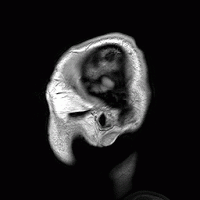Why Materialism and Dualism Both Fail to Explain Your Mind
by Patrick Schultz
Filed under Anthropology
NOTE: This is a follow-up article to Patrick's post on Wednesday titled, "Body, Soul, and the Mind/Brain Question".
Having laid the foundation of the human soul in Wednesday's post, let us now turn to its proper character and function. According to St. Thomas Aquinas, man’s soul comprises all those powers proper to lower organisms, namely metabolism, sensation, and locomotion; however, a still higher power remains that is non-existent in all other soul-possessors—intellection. “We must conclude that the nutritive soul, the sensitive soul, and the intellectual soul are in man numerically one and the same.”1
Therefore, according to Thomas, the substantial form of the human body is the intellective soul, which, in the larger context of this question, is interchangeable with mind. It is by means of the intellective (or intellectual) soul/mind that man experiences an intellectual mode of existence in the world as an embodied creature, an existence entirely different than that experienced by plants, amoebas, frogs, or dogs. There is something it is like to be a knowing, human person, and this something is markedly different from what it is like to be a bat, for example.2 Intellectual existence shapes every facet of our lives and inherently defines what it means to be human.3
This intellectual soul permits us entrance into the sphere of truths where we can apprehend absolute principles and act as responsible agents. It also allows us to encounter a world not populated by brute particulars, but particulars of a universal kind. This allows us to know not simply that things are, but on an even deeper level, what things are. It gives us the ability to paint and build houses, to fall in love, and do science.
As we noted earlier, the middle path of hylomorphism must avoid the pitfalls of dualism and its twin, materialism, and it must also account for world-access and presence. Where dualism wishes to assert the preeminence of mind/spirit/soul over and against the body and brain, hylomorphism adamantly maintains that they are not separable, except through the event of death. The body and the soul are “grown-together,”4 forming a concretized whole that has powers and capacities greater than the sum of its parts. While the substantial form of man, his soul, is the principle of actuality and thus possesses a type of freedom from the body as it persists through time, nevertheless the material component of man, his body, is an absolutely essential ingredient to the substance of man, for the very raison d’être of form is to inform some matter.
Hylomorphism also sufficiently guards against materialism. The hylomorphic alternative does grant materialists that matter is eminently important, concurring with them that the matter of the body is essential—especially so when concerning the matter of the brain. However hylomorphism maintains, in contrast to materialism, the real presence of personal subjectivity experienced by each person by insisting that the substantial form of man is the intellectual soul. There is something about man (human nature) that is properly transcendent, non-reducible, and subjective. Because of this, we are able to reach beyond the material constituency of our corporeality in a non-physical, spiritual way, especially when we come to know anything. This must be granted if one honestly assesses one’s life-as-lived experiences. “We go beyond the restrictions of space and time and the kind of causality that is proper to material things,” writes Sokolowski,5 when we make vows,6 use language, utilize words and symbols, create art, share ideas and thoughts, perform works of Shakespeare, propose mathematical formulas, debate and discuss, engage in politics, and much, much more.7
This is especially the case when we invoke the personal pronoun, I, and act as responsible subjects and agents of truth—there is truly an “I” to speak of, present in every human person, that serves as the center of all personal activity. This spiritual modality of man is his intellective soul. But all of these activities, powers, and capabilities which are spiritual in character, require, at least in part, that we be embodied as well. One cannot bring to life Shakespeare’s Hamlet—a spiritual activity transcending space and time—without having actors with bodies. Though this may seem obvious, it is important for this position.
When it comes to the brain and the mind, it is not a case of either/or, but rather both/and. The brain and nervous system, being informed by the downward causality of man's intellectual soul and thus existing in a properly intellectual way, have a critical role to play when it comes to consciousness and perception. This, however, does not prove that the brain is the seat of intellection, but on the contrary, simply reinforces the hylomorphic position. The brain and the mind are wedded together, or, as Kass says, “grown-together.” Therefore, the mind working in, with, and through the brain exists and operates in a truly spiritual and transcendent way, allowing for world-access.
The mind is not some homunculus trapped within the Cartesian theater of consciousness and scanning the screens of sensory input. Rather, it is actively engaged with the world through the brain and the body as a whole. And just as hylomorphism maintains that persons are concretizations of matter and form grown together, so too does this anthropology grant that things existing in the world exist as matter-form composites. Our world is not populated by heaps of matter but rather matter as informed and as organized wholes. These matter-form composites, existing as intelligible wholes, are potentially knowable to man for he is an intellectual being capable of coming to know things by virtue of his intellectual soul. Moreover, through the brain—not by the brain but rather through it—the meaning, or the intelligibility, of things is conveyed.
Sokolowksi illustrates this idea further utilizing an innovative analogy. The brain and nervous system function, he maintains, much like a transparent lens. When a lens works properly, it refracts and presents that which is beyond it, whether that is a newspaper or the Andromeda galaxy light years away. Unlike a television screen that creates that which is seen, a lens serves as the physical medium through which what is seen is conveyed.
When I hold up a magnifying glass at arm’s length, and gaze into it looking at the wall opposite me through the lens, the image that seems to appear in the glass is not actually in the glass like the image on a TV screen, but rather is actually out there, beyond the glass. With the TV screen, I behold a representation, an image of the real thing, but not the thing itself. But with a lens, what I see in the glass is not something representing the wall, but rather the wall as wall, but in a specifically non-physical way. The lens, then, serves as a physical medium through which the external world of matter-form composites is conveyed and known.
Applying this analogy to the mind and the brain, we can begin to grasp the complex interrelation of soul and body. The brain and the nervous system are the physical medium through which the external world is accessible and knowable to the immaterial mind, not as the result of a secondary stage of re-presentation, but in a single, concomitant moment. The mind needs the brain for it is in accordance with human nature that we come to knowledge and understanding of the world through our physicality and the corporeality of things. This lensing analogy is also helpful in the negative sense, for if the lens is damaged, or misshapen, it cannot convey its object clearly or without distortion. So too when the brain is damaged, the extra-mental world of matter-form composites is not as easily accessible or knowable, and perhaps even opaque to the mind.
The intellect and the brain are wedded together, with the brain and nervous system acting like transparent lenses, not giving themselves, but rather giving that which is beyond them and other. It is only by being interwoven in the body that the mind, the I, can come to know anything, and, furthermore, it is only by encountering corporeal things, through the senses, that we are ever able to attain knowledge of the incorporeal. Therefore, to posit any separation between the mind and the brain, or, to posit any theory that considers the two identical, is incorrect. We conclude that the brain, though an absolutely necessary cause, is not a sufficient cause for the human mind.
This solution offered, however, may strike some as dissatisfying, still riddled with ambiguities. I would like to address that feeling of uneasiness. For many of us, our own intellects have been influenced by the categories and presuppositions of the Cartesian worldview that surrounds us in our contemporary culture. Because we live in a positivistic society that is more apt to follow the decrees of scientism, we almost unconsciously equate the true with the provable, or scientifically demonstrable. We want things to be, as Descartes articulated in his Meditations on First Philosophy, clear and distinct.8 Because of this, we desire to know clearly and distinctly how the immaterial mind and the material brain relate exactly to the point that it could be modeled. However, this desire is misplaced and unwarranted. There are inherent limitations concerning the human person that do not admit of such clear and distinct conceptions.
One such instance concerns the very nature of conscious experience. According to philosopher of consciousness David Chalmers, there are easy problems concerning the mind, and then there are hard problems. The easy problems of consciousness are those that are susceptible to the standard methods of cognitive science.9 Essentially, the easy problems—which are in fact monumentally complex in scope and wildly ambitious in aim—concern the functionality and structural mechanisms of cognition, like the “ability to discriminate, categorize, and react to stimuli...the focus of attention,” and much more.10 In all of these cases, a clear cognitive or neurophysiological model can be employed to give an adequate account of what’s going on up there.
However, the real issue in explaining consciousness is the problem of felt experience. As Chalmers puts it, there is a co-relative subjective element (i.e., pertaining to a subject, a unique I) to all of our objective mental activities; with each and every perception of the color red, for example, there is a concomitant felt subjective experience of what it’s like to perceive the color red. In a word, “there is something it is like to be a conscious organism.”11 I think Chalmers is correct to point out this perplexing quality of consciousness that is simply inextricable by recourse to material explanations and does not admit of clear and distinct answers. Why is it that when our visual or auditory systems engage in visual or auditory information processing, we have a visual or auditory experience? Why is it that when I hear “Amazing Grace,” or smell Dial soap I have an experience of these particular stimuli? His question, the hard problem, is this: “why should physical processing give rise to a rich inner life at all? It seems objectively unreasonable that it should, and yet it does.”12
I believe that Chalmers’ distinction between the easy and the hard problems of consciousness is merely symptomatic of a second, deeper dichotomy concerning the nature of the human person: the distinction between problem and mystery and the rampant confusion of the two. Problems are those things that can be objectified.13 For us today, the word objective connotes a sense of precision, exactness, or unbiased truth. It comes from the Latin word objectum, which means, “a thing put before (the mind or sight).”14 In its original usage, then, something objective was something placed before me, in front of and present to my powers of manipulation, capable of being solved or overcome. Problems are questions in which I am not involved, and because of that, I can solve them (at least in theory). They can be addressed and solved through a technique repeatable by others. A mystery, on the other hand, is something in which I myself am inherently a part of; I cannot be separated from it, in an objective sense.15 With mystery, I am both part of the problem and the problem-solver.
In our modern world—particularly the Western culture—everything has been reduced to the problematic, leaving no room for mystery; we Americans are good with problems—we put a man on the moon, for goodness sakes! Mysteries, are a different story. In our culture, mysteries are those things that we have not yet solved. Daniel Dennett announces, “Human consciousness is just about the last surviving mystery. A mystery is a phenomenon that people don’t know how to think about—yet.”16 He goes on to equate the mystery of consciousness with other mysteries that eventually fell before the methods of science, such as the origin of the universe, the reproductive process, the nature of time, space, and gravity.17 Unfortunately, I do not suppose that the mystery of the human mind will give way to Daniel Dennett’s probing any time soon.
What I have been arguing for, and what I have proposed by way of a hylomorphic alternative, is a recapitulation of the mystery of the human person, revealed in the spiritual modality proper to him. The competing anthropologies of dualism and materialism each treated man as a problem to be solved: How, Descartes asked, can we clearly and distinctly conceive of the mind in relation to the body? Or, how, materialists wonder, can we prove that the mind is nothing but an epiphenomenon of the brain? Both positions fail, where they hylomorphic alternative maintains a both/and position that accounts for corporeality as well as intellectuality. It does not attempt to swallow up subjectivity into physical brain activity alone. It incorporates the brain and the mind in such a way that they are not only compatible, but also co-dependent and “grown-together.”18 The mind, or spirit, of man exercises definitive downward causality on the brain and the matter of the body, while the body and the brain are needed for the full flourishing and activity of the mind. Truly, man is not a problem to be solved, but rather a mystery to be lived. Let us insist on the mystery of the human person, and especially, on the mystery of the mind and the brain.
Related Posts
Notes:
- Thomas Aquinas, Summa Theologiae, I, 76, iv. ↩
- Thomas Nagel, Mortal Questions (New York: Cambridge University Press, 1979), 165 ff. ↩
- Thomas Nagel proposes an interesting thought experiment that asks, what is it like to be a bat? It’s curious because many, in trying to answer the question, in trying to picture flight, echolocation, a nocturnal life-cycle, etc., inevitably anthropomorphize these concepts. In other words, they consider echolocation through the lens of human perception. The point is that there is something it is like to be a bat even though we cannot say what it is; the objective cannot explain the subjective. ↩
- Kass, Hungry Soul, 35. ↩
- Sokolowski, Christian Faith and Human Understanding, 151. ↩
- For a detailed discussion of vows, see Hans Jonas’ The Imperative of Responsibility, 205 ff. ↩
- Sokolowski, Christian Faith and Human Understanding, 157. ↩
- René Descartes, Meditations on First Philosohy in Descartes: Selected Philosophical Writings, trans. John Cottingham, Robert Stoothoff, and Dugald Murdoch (New York, NY: Cambridge University Press, 1998), 87. ↩
- David Chalmers, “Facing Up to the Problem of Consciousness” in Journal of Consciousness Studies (1995), 2. ↩
- Chalmers, “Facing Up,” 2. ↩
- Ibid.,3. ↩
- Ibid., 4. ↩
- Gabriel Marcel, Homo Viator (Peter Smith: Gloucester, Mass: 1978), 68. ↩
- Oxford English Dictionary, “object.” <http://www.oed.com>. ↩
- Marcel, Homo Viator, 68-69. ↩
- Daniel Dennett, Consciousness Explained (New York, Boston, and London: Back Bay Books, 1991), 21. ↩
- Ibid., 21. ↩
- Dennett, Consciousness Explained, 35. ↩
Note: Our goal is to cultivate serious and respectful dialogue. While it's OK to disagree—even encouraged!—any snarky, offensive, or off-topic comments will be deleted. Before commenting please read the Commenting Rules and Tips. If you're having trouble commenting, read the Commenting Instructions.













